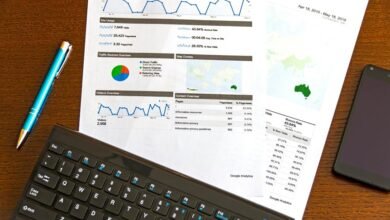Find Out Everything Caller Check 3801309633 3511942317 3512127195 3892844902 3516844930 3511208398

The investigation into the identities behind the numbers 3801309633, 3511942317, 3512127195, 3892844902, 3516844930, and 3511208398 reveals a pressing need for caller verification. Each number holds potential insights into its origin and purpose. This inquiry raises questions about the effectiveness of caller identification tools. What can these resources uncover about the legitimacy and intent of such calls? The answers may be crucial for managing unsolicited communications effectively.
Understanding Caller ID and Unknown Numbers
Caller ID serves as a crucial tool in modern telecommunications, providing users with the ability to identify incoming calls before answering.
This functionality enhances caller identification, allowing individuals to screen unknown callers effectively. By granting the freedom to choose which calls to engage with, caller ID empowers users, reducing unwanted interruptions and potential scams while fostering a sense of control over personal communication.
Identifying the Callers: A Deep Dive
The ability to identify callers has evolved alongside advancements in telecommunications technology, leading to a complex landscape of recognition methods.
Caller reputation plays a crucial role in discerning the nature of incoming communications, while number verification ensures accuracy and safety.
As individuals seek autonomy over their communications, understanding these tools becomes essential for navigating a world filled with unknown callers and potential threats.
Tips for Handling Unwanted Calls
Numerous strategies exist for effectively managing unwanted calls, reflecting the diverse experiences individuals face in today’s communication landscape.
Implementing blocking techniques can significantly reduce disturbances, while call screening allows users to assess caller legitimacy before engagement.
Resources for Caller Lookup and Reporting
Access to reliable resources for caller lookup and reporting is essential in navigating the complexities of modern communication.
Utilizing comprehensive caller directories allows individuals to identify unknown numbers effectively. Additionally, employing reporting tools can empower users to flag spam or fraudulent calls, contributing to a safer communication environment.
These resources promote transparency and freedom, enabling users to reclaim control over their telephonic interactions.
Conclusion
In an age where connectivity is both a blessing and a curse, the distinction between legitimate callers and potential threats becomes paramount. Like a lighthouse guiding ships away from treacherous shores, comprehensive caller lookup tools illuminate the shadows of anonymity surrounding numbers such as 3801309633 and 3511942317. By engaging these resources, individuals can navigate their telephonic landscape, transforming the chaos of unwanted calls into a realm of informed choice and security, ensuring peace of mind amid the noise.





